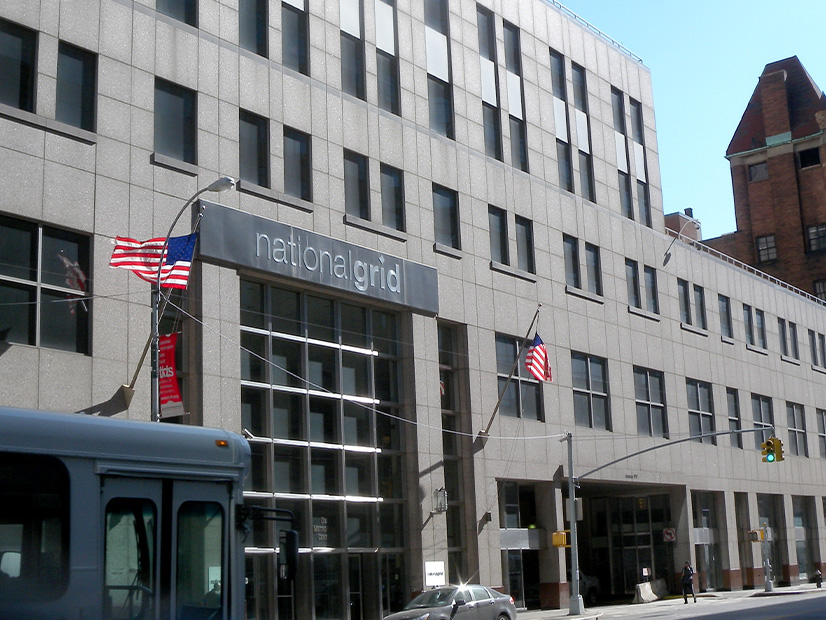
National Grid USA must pay $512,000 in penalties to the Northeast Power Coordinating Council (NPCC) for violations of NERC reliability standards, under a settlement approved by FERC on Friday (NP22-33).
According to the agreement, National Grid — which owns about 8,900 miles of transmission lines and 387 substations and serves about 3 million customers in New York and Massachusetts — admitted to three separate violations. Two involved FAC-008-3 (Facility ratings), and the third PRC-023-4 (Transmission relay loadability). All were self-reported.
At issue with the FAC-008-3 violations were requirements R6 and R8 of the standard. R6 requires that each transmission and generation owner have facility ratings for their solely- and jointly-owned facilities that are “consistent with the associated facility ratings methodology” (FRM), while R8 specifies the information that TOs must provide to reliability coordinators and other stakeholders when requested.
National Grid first realized that it might be in violation of the standard while it was preparing for its annual TPL-001-4 planning assessment and “another related project” in September 2019. Specifically, the entity discovered that “six transmission facilities did not have facility ratings … that were consistent with its” FRM. A subsequent extent of condition review, in which National Grid analyzed the facility ratings for all of its 726 bulk electric system elements in New England and New York, revealed similar issues at 100 facilities.
That was not the last time the utility would unearth ratings discrepancies at its facilities. During an asset baseline pilot in 2021 during which National Grid conducted field visits to 20 substations to verify field conditions, the entity found eight more facilities in which the field conditions did not match the ratings on record (another eight had already been flagged during the earlier review).
National Grid determined that the incorrect ratings had begun “on a variety of different dates,” stretching back to 2007 or earlier. NPCC asserted that because of the long duration, multiple versions of the standard were violated, from FAC-009-1, which took effect June 2007, to FAC-008-4, the currently effective standard.
The violations of R8 were discovered during the same planning assessment in 2019, with National Grid reporting to NPCC that it had failed to provide ISO-NE and NYISO accurate facility ratings for six transmission facilities. An extent of condition review found similar discrepancies at 154 facilities, later determined to span a similar time frame as the R6 violations.
NPCC assessed both the R6 and the R8 violations as a serious risk to bulk power system reliability, noting that incorrect facility ratings cause system operators to operate “with a decreased level of situational awareness in real-time and [monitor] contingencies with reduced accuracy.” Mitigation actions are ongoing and not expected to finish until 2025. They include walkdowns of all 175 BES substations and switching stations in New York and New England, with visual inspections of nameplates, transformers and bus conductor types at each station.
National Grid has already updated facility ratings with NYISO and ISO-NE where possible and updated its FRM “to document how global changes to key assumptions will be implemented and/or applied to existing facility ratings.” It has also begun a semi-annual review in New York “to verify that facility ratings updates made within the previous six months were correctly implemented and documented.”
Relay Setting Slip-ups
The utility’s violation of PRC-023-4 involves requirement R1, which details the criteria that TOs, GOs and distribution providers must use on circuit terminals to “prevent [their] phase protective relay settings from limiting transmission system loadability.” Criterion 1 tells utilities to set relays “so they do not operate at or below 150% of the highest seasonal facility rating of a circuit,” while criterion 2 requires relays to be set “so they do not operate at or below 115% of the highest seasonal 15-minute facility rating of a circuit.”
National Grid notified NPCC in July 2019 that it was noncompliant with R1 because 10 of its protective relay settings did not meet criterion 1 for relay loadability. The following year the utility reported an additional relay setting that did not meet criterion 2, and it reported five more violations of criterion 1 in 2021. In all, there were 16 noncompliant relay settings affecting 13 transmission lines. The infringements began in 2010 and had all been corrected by September 2021.
NPCC determined that the violation posed a moderate risk to BPS reliability: While improper protective relay settings increase “the risk that transmission lines would trip prematurely,” the RE also noted that National Grid is a summer peaking system and the feeder loadability issue affects the winter season.
National Grid’s mitigation actions include applying new settings for appropriate relays and implementing a tracking spreadsheet to ensure PRC-023 compliance among applicable relays. The utility also implemented a new training module for the protection engineering team on completing the new spreadsheet, and committed to update the annual training — next scheduled for January 2023 — to “include the different calculations that exist and when to apply them.”

